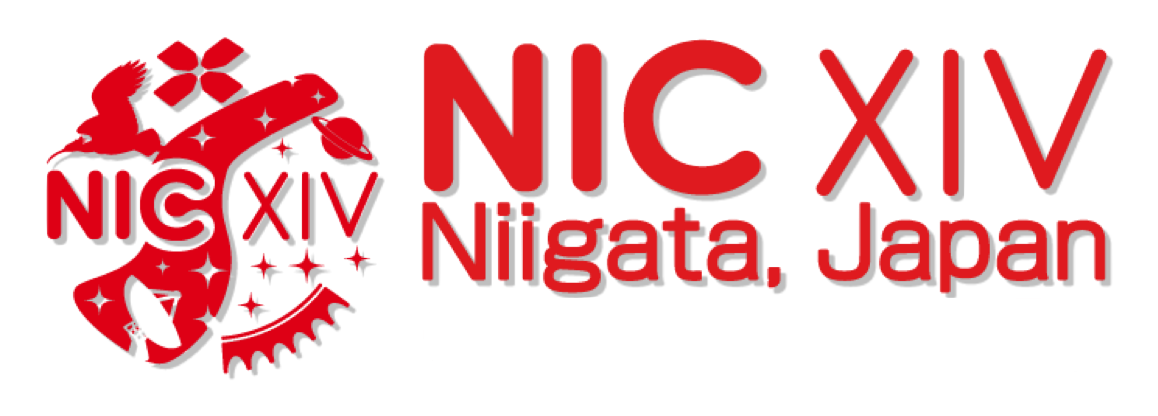Speaker
Mr
Kanji Mori
(the University of Tokyo)
Description
Recent experimental results have confirmed a possible reduction in the GT+ strengths of pf-shell nuclei. These proton-rich nuclei are of relevance in the deflagration and delayed-detonation and explosive burning phases of Type Ia supernovae (SNe Ia). While prior GT strengths result in nucleosynthesis predictions with a higher-than-expected neutron-excess isotopes for the elements Cr-Mn-Fe-Co-Ni even in a best SN Ia model W7 [1], a reduction in the GT+ strength can result in a reduced abundance of these neutron-rich nuclei. A new generation of shell model parametrization [2] has been developed which more closely matches experimental GT strengths [3]. The resultant electron-capture rates are used in nucleosynthesis calculations for carbon deflagration and delayed-detonation explosion phases of Type Ia supernovae, and the final mass-fractions are compared to those obtained using more commonly-used rates [4].
[1] K. Iwamoto et al., Astrophys. J. Suppl. 125, 439 (1999).
[2] T. Suzuki, M. Honma, H. Mao, T. Otsuka and T. Kajino, Phys. Rev. C 83, 044619 (2011).
[3] M. Sasano et al. PRL 107, 202501 (2011); Phys. Rev. C86, 034324 (2012).
[4] K. Mori, M. A. Famiano, T. Kajino, T. Suzuki, J. Hidaka, M. Honma, T. Otsuka,
K. Iwamoto and K. Nomoto in preparation.
Primary author
Mr
Kanji Mori
(the University of Tokyo)
Co-authors
Prof.
Jun Hidaka
(Mesei University)
Prof.
Ken'ichi Nomoto
(Kavli IPMU, The University of Tokyo)
Dr
Koichi Iwamoto
(Department of Physics, College of Science and Technology, Nihon University)
Prof.
Michael Famiano
(Western Michigan University)
Prof.
Michio Honma
(University of Aizu)
Prof.
Taka Kajino
(NAOJ, University of Tokyo)
Prof.
Takaharu Otsuka
(University of Tokyo)
Prof.
Toshio Suzuki
(Nihon University)

